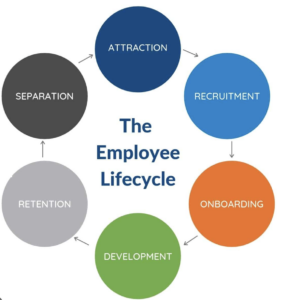Performance reviews: two words that can prompt groans and eyerolls, even from experienced people managers. But provided there are clear processes in place and they are handled well, they can be a powerful tool for development, motivation, and alignment. Whether you’re in HR or line management, having a solid, repeatable process can turn reviews from a dreaded tick-box exercise into something genuinely valuable.
Here’s a step by step process to managing performance reviews, with clear milestones to diarise.
Set the stage
Milestone: Objectives agreed and documented
The objectives you set for your people are the start of the whole process and enable you to review progress effectively. The objectives should be clear, measurable, and linked to both team and business priorities.
Tip: Create objectives with your team members rather than imposing your ideas. It’s more engaging, and they’re more likely to take ownership. Tie them into personal development goals where you can.
Also, make sure you’re aligning with your company’s wider strategy and talk this through, so your team understand the relevance of the objectives. You can use frameworks like OKRs (Objectives and Key Results) or KPIs (Key Performance Indicators) to build on for individual objectives.
Check-in, not check-out
Milestone: Mid-year review or formal check-in completed
Don’t wait until the end of the review cycle to tell someone they’ve been veering off-track for weeks or months. A mid-year review (often informal) is best practice and helps avoid surprises. Use it to reflect on what’s going well, where adjustments are needed, and if any objectives need tweaking.
Tip: Think “coaching chat” not “mini appraisal.” Ask open questions, and resist the urge to make it all about delivery — talk behaviours, learning, and wellbeing too.
Feedback culture
Milestone: Continuous feedback recorded and shared
Regular, real-time feedback makes performance reviews far less painful. Encourage feedback from peers, clients, and stakeholders — not just a manager’s view from above.
Businesses sometimes use 360-feedback processes or simplified “Stop, Start, Continue” models.
Tip: Praise in public, give constructive feedback in private — and always be specific.
Prepare for the main event
Milestone: Employees self-assess and managers prepare review notes
As you approach the end of the cycle for performance reviews, you should start to prepare for the more formal meeting. Encourage your team to do a self-evaluation. It helps them to reflect and get actively engaged in the process. At the same time you should also reflect on their progress against the objectives, KPIs and / or OKRs and use your notes to compile your manager assessment.
This is also a great time to look at development plans and future ambitions. Think about whether someone’s ready for progression, or if they need more support.
If you have a form for the review, use this to guide your preparations and make sure the employee has a copy of this, to help them prepare, whether it’s online via your HR system or paper-based.
Tip: Calibration sessions with other managers can help ensure fairness and consistency, especially in larger organisations.
The review meeting
Milestone: Reviews completed and development plans updated
Don’t wing it. Make the review a proper conversation and put it in the diary for up to 90 minutes. The meeting may not last that long, but it’s better to free up time, than have to rush and stop before you’re finished and have to reschedule. Use a structured agenda: start with a recap of objectives, cover what’s gone well, where there are gaps, and agree a development plan for the year ahead.
Be balanced, be honest, and always listen. People may remember how you made them feel more than what you said.
Tip: Avoid the “feedback sandwich” — be direct but kind. If you’ve been giving feedback all year, nothing should be a shock.
Follow-up
Milestone: Development activity embedded and support in place
Performance management doesn’t end with the review — that’s just the launch pad. In the new year, check that agreed actions and training are actually happening. Line up mentors, book courses, and keep the momentum going.
Tip: Schedule monthly or quarterly 1:1s to track development progress, as well as day-to-day work and progress against the objectives set.
Summary
Managing a performance review process doesn’t have to feel like climbing Ben Nevis in a snowstorm. With regular check-ins, clear milestones, and a culture of continuous feedback, you can make reviews meaningful and motivating — not just a once-a-year tick-box task.
Need a quick checklist?
✅ Objectives set
✅ Mid-year review
✅ Regular feedback
✅ Review prep
✅ Formal review & development plans
✅ Action the outcomes
If you need advice about how best to manage your performance review process, get in touch.


Recent Comments